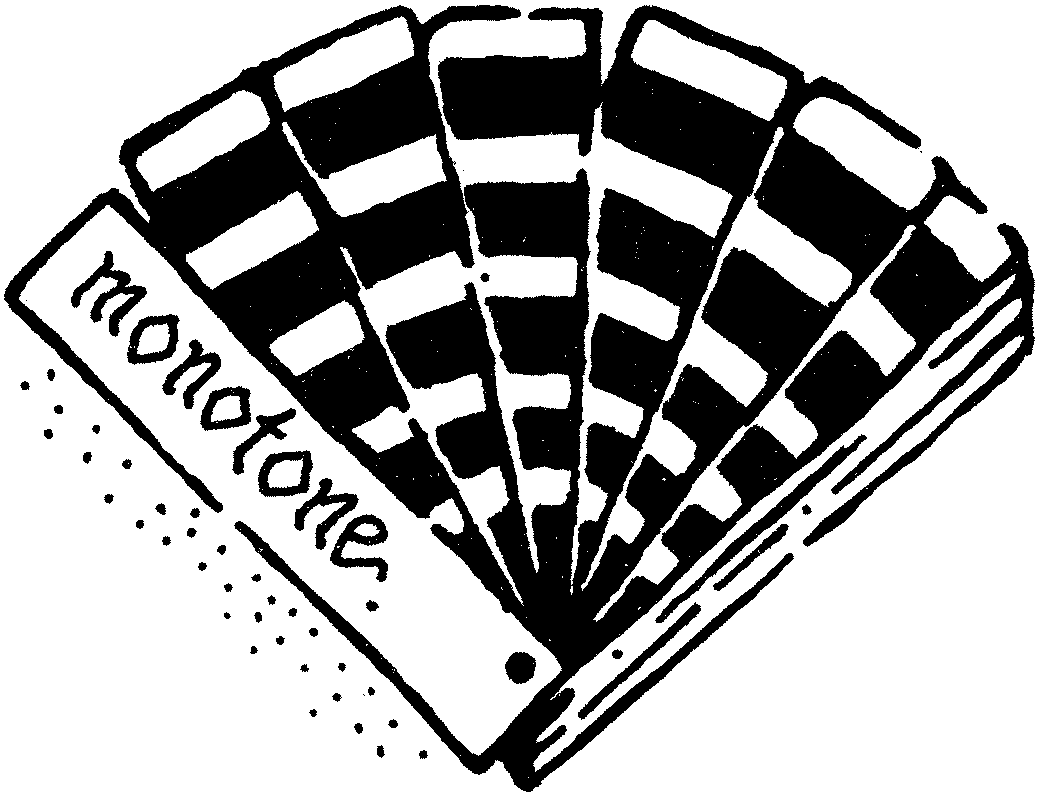Black and white
Some notes on how designing without resorting to colour as an identification tool might be possible.
Norma,
“An antithesis to the postcard mentality.” 1 This was the manifesto-idea for an identification and advertisement program Otl Aicher began developing in the 1960s, with the goal of selling it to Ulm for the city’s communication. Green pine trees turned into black triangles, blue skies into white backgrounds, and people into monochrome geometrical outlines.
The system, finally adopted by the city of Isny in 1976, kept Aicher busy for the next decade, designing about one hundred pictograms used in posters and other promotional material, exclusively in black and white. An extensive city branding project followed in the early 1980s, triggering more than a little local criticism. Indeed, when the municipality changed direction in 1985, the entire system was abandoned in favour of a return to verdant postcards. 2
Because, somehow, people feel represented by a sound or a text that have no exact shape or colour (the name “Isny”, for example) but not by a figurative association with a purely promotional goal – which, by the way, is where standing out from the status quo is the best way to attract attention. Is there a link here with the growing visual consumerism which, since the mid-1980s, has brought bright colours and hues even where sobriety had reigned undisputed?
Regardless of the use of colour photographs, the demand for a “corporate colour” seems to be as widespread as the hypothetical need for a logo and a set of icons today. Even better if the colour is “one’s own”, one no one else can use, to make us feel even more unique and special. Vignelli called it “chromotype” 3 and linked its choice to how appropriate it is for one’s communicative intent. But this does not mean that its use is strictly essential, as indeed proven by the fact that this article is about Isny and not about some other colourful town in the Allgäu region.

It is interesting to note how much the interpretation and use of colour have fueled debates among European intellectuals since ancient times. These were often theological in nature: for example, in Gregory the Great’s exegesis of the Song of Songs, colour is already described as a sort of vanity that hides the true meaning of things, as dwelling on words and not on their meaning is compared to looking at the colours in a painting. 4
And while biblical interpretation is clearly far from consumer choices today, this dichotomy still remains anywhere Western thought has had an influence. We have expensive professional products in neutral colours on the one hand, and cheap products in bright colours, targeted to a wider audience, on the other.
From graphic designers’ point of view, every project starts with an empty, entirely white canvas, without borders. White is always the starting point, even when working on existing graphics. It is up to the designer to choose which materials, shapes and elements to use. What to keep and what to leave out.
The general impression – leading to the tendency to decorate objects dedicated to the general public – is that the canvas should be filled with everything available: symbols, logos, texts, photos, drawings, colours. It seems that the artist is required to have a palette with oils, acrylics and watercolours of every imaginable hue, all at the same time, to satisfy the audience’s need for visual consumerism, and become a pop artist.
In support of this point of view of “abundance”, the etymological interpretation of the word “colour” by Isidoro di Seville associates it to the positive term calore, Italian for “heat”. 5
But the white canvas is pure, and its purity decreases with every mark. White slowly vanishes into gray. Pop artists lived in the abundance of the post-war period, when austerity was replaced by appliances, cars and holidays; today’s designers live in a bulimia that has changed the entire planet’s climate. For this reason, we are now extremely careful about every mark we decide to leave on our own white canvas. Because we think a different etymological interpretation of the word “colour” is more correct: the one that associates it to the term celare, Italian for “to conceal” – to hide reality behind decoration. 6

What should we do then? Use typography, the most precise medium to convey information. Use photographs and images when absolutely necessary, to complement the text. What else can be truly necessary? Continue limiting the use of materials carrying a meaning that cannot be quantified: colour, for example.
Is green a symbol for vegetation or money? Why can blue represent safety, if safety vests are yellow? Why is yellow considered a warm hue, when its amber light actually has a very low temperature? We already have to consider and remember a great number of symbols and meanings in everyday life: colour adds nothing but variables that are difficult to control.
“Using black and white or a grayscale can help you make very precise decisions,” Kasper-Florio reply in their interview for Ligature. 7 There are plenty of beautiful colours in nature already, AG Fronzoni often said. And Ockham encourages us to favour the simplest solution: design in black and white. The only colour that survives the “truth” of black and white, as Helmut Schmid told Designculture, is colour used as colour, necessary for identification, as a signal: a yellow helmet, a blue link.
After all, black text on white background is also the most readable. 7 There is no reason to distract the audience if not to do something “pop”: we need more austerity.

-
1
Patrick Eley, Elli Stuhler, Joy Nazzari, Guy Hulse: “Otl Aicher's Isny”. Place Press, 2017. p. 33.
↩︎ -
2
Ibid. p. 36.
↩︎ -
3
Massimo Vignelli: “The Vignelli Canon”. Lars Müller, 2010. p. 92.
↩︎ -
4
Cant.4 (CCSL 144:5, II. 49-54): “Sic est enim scriptura sacra in uerbis et sensibus, sicut pictura in coloribus et rebus: et nimis stultus est, qui sic picturae coloribus inheret, ut res, quae pictae sunt, ignoret.”
↩︎ -
5
Etymologiae, libro XIX, section 17, 1.
↩︎ -
6
Andres M. Kristol, “Color: les langues romanes devant le phénomène de la couleur”, Berne, 1978 (Romanica Helvetica, vol. 88), p. 9-14.
↩︎ -
7
Dennis Moya, Larissa Kasper, Rosario Florio: “Kasper-Florio — Interview”. Ligature, August 2014. (ligature.ch)
↩︎ -
8
Nicola Munari, Helmut Schmid: “Helmut Schmid”. Designculture, December 2013. (designculture.it)
↩︎ -
9
Anja Zorko, Snježana Ivančić Valenko, Mario Tomiša, Damira Keček, Darijo Čerepinko: “The Impact of the Text and Background Color on the Screen Reading Experience”. Technical Journal 11, March 2017. (hrcak.srce.hr)
↩︎